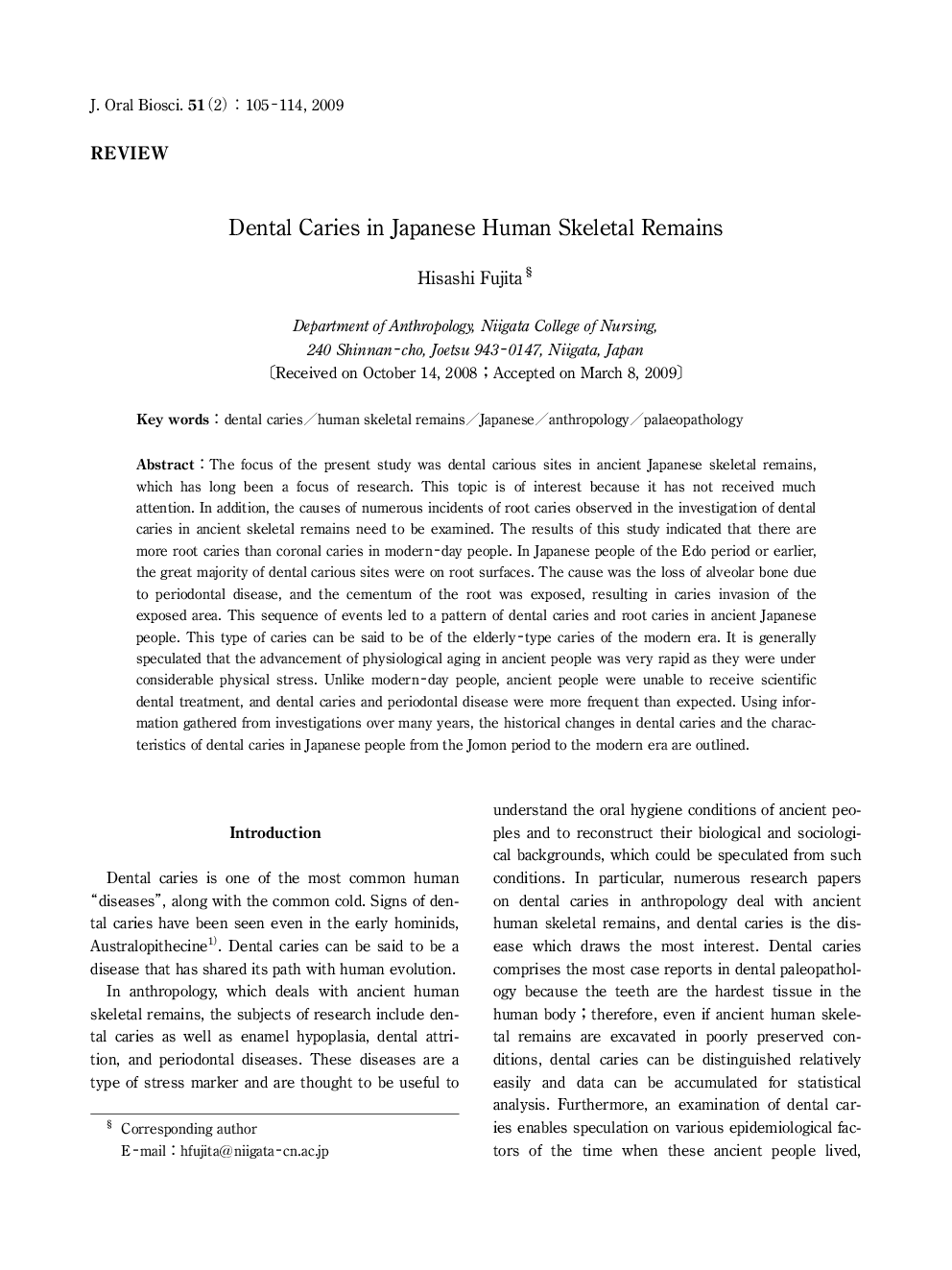| Article ID | Journal | Published Year | Pages | File Type |
|---|---|---|---|---|
| 2776853 | Journal of Oral Biosciences | 2009 | 10 Pages |
The focus of the present study was dental carious sites in ancient Japanese skeletal remains, which has long been a focus of research. This topic is of interest because it has not received much attention. In addition, the causes of numerous incidents of root caries observed in the investigation of dental caries in ancient skeletal remains need to be examined. The results of this study indicated that there are more root caries than coronal caries in modern-day people. In Japanese people of the Edo period or earlier, the great majority of dental carious sites were on root surfaces. The cause was the loss of alveolar bone due to periodontal disease, and the cementum of the root was exposed, resulting in caries invasion of the exposed area. This sequence of events led to a pattern of dental caries and root caries in ancient Japanese people. This type of caries can be said to be of the elderly-type caries of the modern era. It is generally speculated that the advancement of physiological aging in ancient people was very rapid as they were under considerable physical stress. Unlike modern-day people, ancient people were unable to receive scientific dental treatment, and dental caries and periodontal disease were more frequent than expected. Using information gathered from investigations over many years, the historical changes in dental caries and the characteristics of dental caries in Japanese people from the Jomon period to the modern era are outlined.
